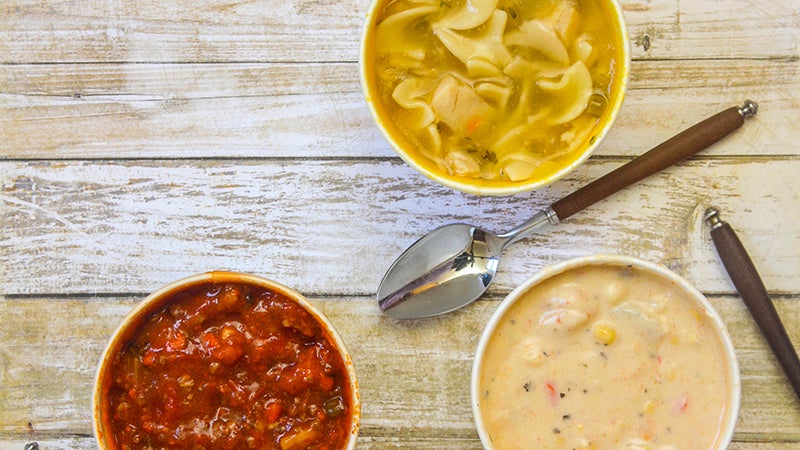NELSON: Stay warm with soups and salads
Published 4:28 pm Friday, January 5, 2018

- Nothing breaks the chill and warms up the body like hot soups, stews and chili.
Temperatures this past week has been some of the coldest around Dallas County in years, and cold winter days cause people including me to want to warm up with hot foods.
Nothing breaks the chill and warms up the body like hot soups, stews and chili. Moist, steamy foods seem to warm us through and through and can be healthy and economical at the same time.
Since moist cooking tenderizes foods, especially meats, cheaper cuts of meat can be used and little fat is needed in soups, making them a healthy choice.
Also, if made the day before and allowed to chill, you can remove the fat, making the soup lower in calories.
Small amount of fat may be used to add flavor, but the best way to boost flavor is by using herbs and spices. Cumin, garlic, bay leaves and thyme are just a few of the spices that work well in soups. If fresh herbs are used, add them in the last moments of cooking so that the flavor in the essential oils of the herbs will not be cooked away. A fresh lemon added a few minutes before the soup is done will also add a flavor burst.
Soups and stews are a great way to get in your recommended number of servings of vegetables (3 or more per day and 1/2 cup is a serving of cooked vegetables). They are also a great way to used leftover vegetables — simple keep a freezer bag or container in your freezer and after meals put all leftover vegetables like green peas, corn, beans, etc. in the bag and when you are ready to make soup you are set; simply add to them to your pot.
Cream based soups may have more calories, but they are a good way to add more calcium to the diet. The American Heart Association Cookbook and other cookbooks provide recipes for making cream soups using dry powdered milk. Dry milk is fat-free and offers a good alternative instead of using cream or whole milk. Liquid fat-free milk can serve the same purpose as dry milk. The advantage of dry milk is dry soup mix can be prepared in advance and kept on hand.
Soups and stews are economical because they can be prepared from inexpensive cups of fresh meats, such as chicken thigh sections and vegetables or from a combination of leftovers. Other tips for good soups/stews are:
•The best method to thicken most soups and stews is to remove some of the cooked vegetables, puree in a blender and return the pureed mixture to the pot.
•Make soups/stews one-two days in advance to allow flavors to blend.
•Crockpots/slower cookers are great for making soups and stews — fill and the cooking is done while you sleep or while you’re at work.
•Improve nutritional value by adding chicken broth when the recipe calls for water.
•When reducing or boiling down a soup stock, do not add the salt until the end.
•If soup is too salty, add half a peeled raw potato and simmer about 15 minutes to absorb excess salt; remove the potato.
•One teaspoon of sugar or light brown sugar will mellow the acidity of tomato soup.
•As a general rule of thumb, one quart of soup equals six first-course serving and three to four main course servings.
Slow-cooker Chunky Chicken Chili
Lovers of dark chicken meat will love this zesty chili that features hominy rather than beans!
Ingredients
2 pounds boneless skinless chicken thighs
2 cans (14 1/2 ounces each) diced tomatoes with green chilies, undrained
1 can (15 ounces) tomato sauce
1 package (1 ounce) chili seasoning mix
2 cans (15 1/2 ounces each) hominy, drained
Sour cream, if desired
Cilantro, if desired
Steps
Place chicken in 3 1/2- to 4-quart slow cooker. Mix tomatoes, tomato sauce and chili seasoning; pour over chicken.
Cover and cook on low heat setting 7 to 9 hours or until juice of chicken is no longer pink when centers of thickest pieces are cut.
Stir to break up chicken. Stir in hominy. Cover and cook on low heat setting 15 minutes until heated through. Serve chili with sour cream and cilantro.
Note: This recipe was tested in slow cookers with heating elements in the side and bottom of the cooker, not in cookers that stand only on a heated base. For slow cookers with just a heated base, follow the manufacturer’s directions for layering ingredients and choosing a temperature.





